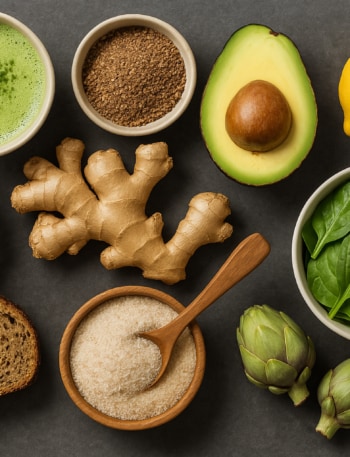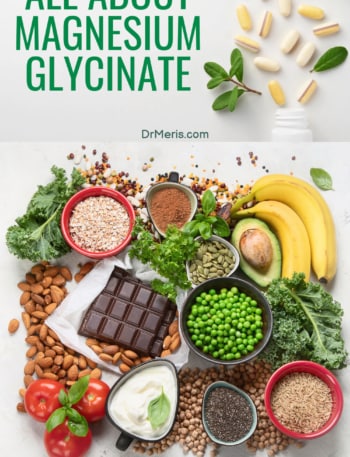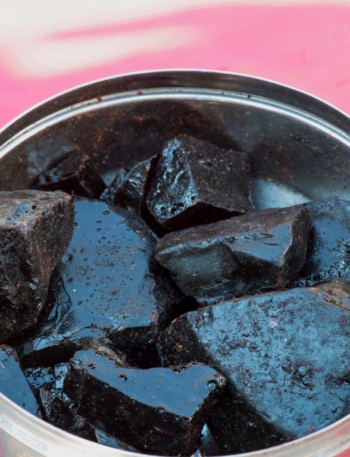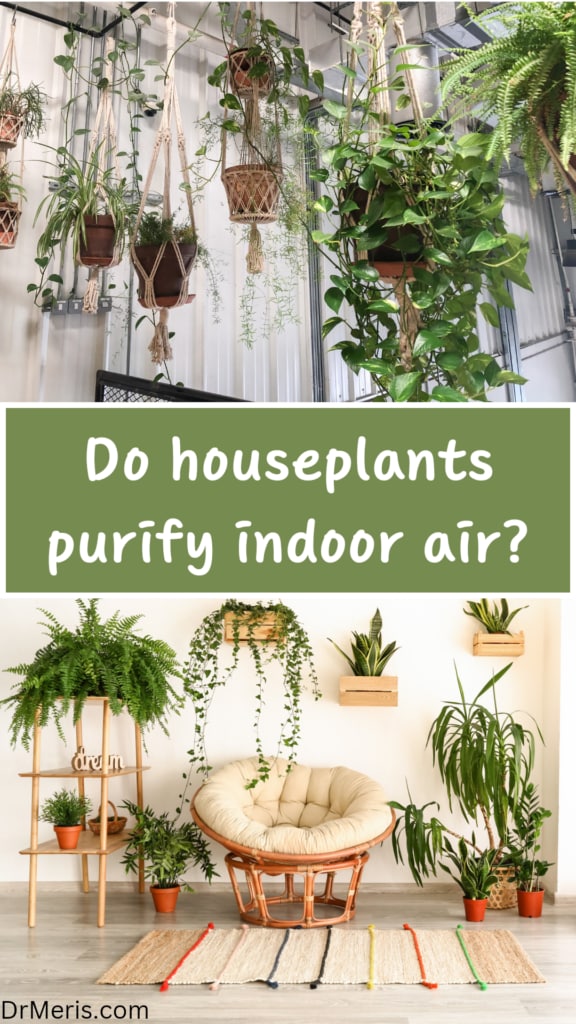
There are many reasons why you’d want to have houseplants in your home or office. The process by which plants produce oxygen and energy in the form of sugar using carbon dioxide, water, and sunlight is known as photosynthesis. So many people are aware that plants emit oxygen and absorb carbon dioxide. They also act as natural humidifiers by releasing moisture into the air. One benefit that frequently comes to mind is that houseplants purify indoor air. Is this possible?
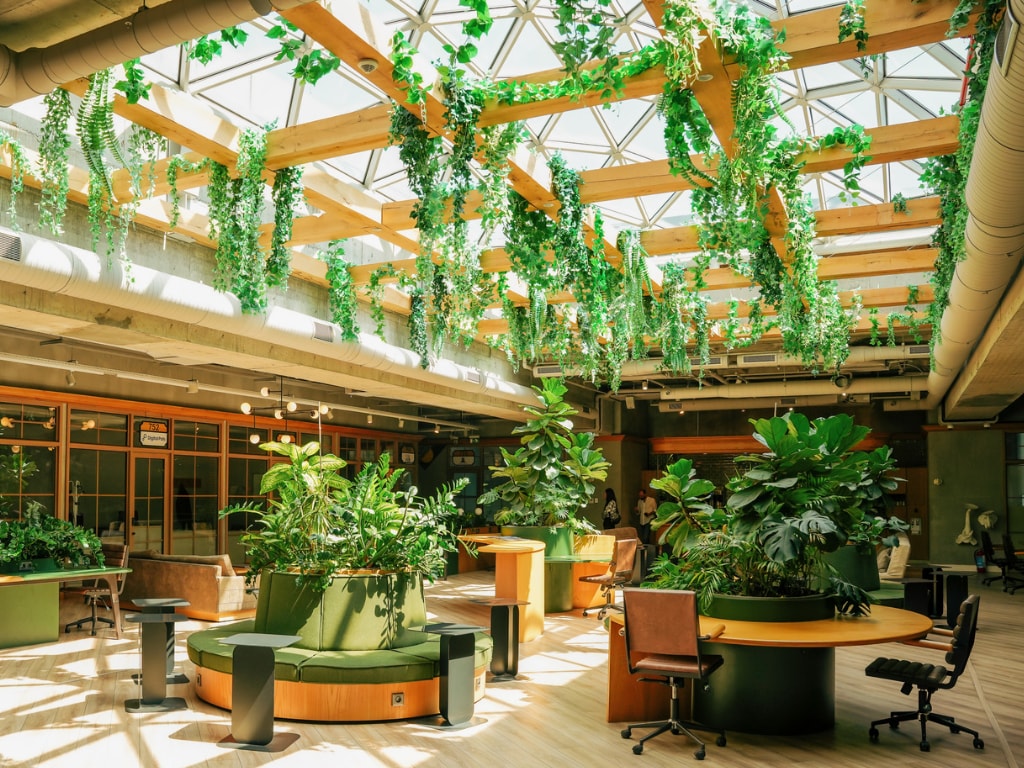
There are plenty of articles online that promote houseplants as a quick and inexpensive option to improve your air quality. And what about all those lists of “Best Air-Purifying Plants”? What should we choose?
These lists are based on the renowned NASA Clean Air Study1 and other studies that followed. In its initial study NASA examined house plants extensively to figure out how to use them on space missions due to their success in improving oxygen levels.
NASA revealed that several indoor houseplant species have a unique way of organically cleansing the air and eliminating pollutants that are dangerous to our health. However, these are all experimental results. So, do houseplants filter the air in our houses or indoor spaces?
What has research found about houseplants purifying air?
The popular NASA Clean Air Study, titled “A study of interior landscape plants for indoor air pollution abatement: An Interim Report”1, was a project led by the National Aeronautics and Space Administration (NASA) in 1989, in collaboration with the Associated Landscape Contractors of America (ALCA), to investigate ways to clean the air in sealed environments such as space stations.
According to the findings, a variety of houseplants purify indoor air. They are particularly successful at removing volatile organic compounds (VOCs) such as benzene, formaldehyde, ammonia, and trichloroethylene, in addition to absorbing carbon dioxide and releasing oxygen through photosynthesis.
NASA conducted the study in a sealed lab setting. It showed that effective air purification of interior contaminants required at least one plant per 100 square feet of area.
Further research has been conducted by Dr. B. C. Wolverton since the first 1989 study, including a 1993 paper2 and 1997 book3, the principal researcher on the original NASA study, that included additional plants and focused on the removal of specific compounds.
A separate study published in 2004 found that microorganisms in the soil of a potted plant remove benzene from the air and that some plant species themselves contribute to benzene removal.4
Thus, the microbial population that lives in the plant’s rhizosphere/soil system is more important for VOC elimination than the plant itself. Microorganisms connected with their roots and within the soil can adapt to varied carbon sources and thereby break down a variety of VOCs.
Here is the list of the houseplants that were initially tested by NASA in 19891.
- Chinese evergreen (Aglaonema modestum)
- Bamboo palm (Chamaedorea seifrizii)
- Florist’s chrysanthemum, pot mum (Chrysanthemum morifolium)
- Janet Craig (Dracaena deremensis “Janet Craig”)
- Warneckei (Dracaena deremensis “Warneckei”)
- Cornstalk dracaena, mass cane/corn cane (Dracaena fragrans ‘Massangeana’)
- Red-edged dracaena, marginata (Dracaena marginata)
- Weeping fig (Ficus benjamina)
- Barberton daisy, gerbera daisy (Gerbera jamesonii)
- English ivy (Hedera helix)
- Variegated snake plant, also known as mother-in-law’s tongue (Sansevieria trifasciata laurentii)
- Peace lily (Spathiphyllum ‘Mauna Loa’)
Why doesn’t it work?
In reality, houseplants don’t purify indoor air efficiently. These findings don’t apply to normal buildings, because outdoor-to-indoor air exchange already eliminates VOCs at a rate that could only be matched by placing 10 to 1000 plants per square meter of floor space5.
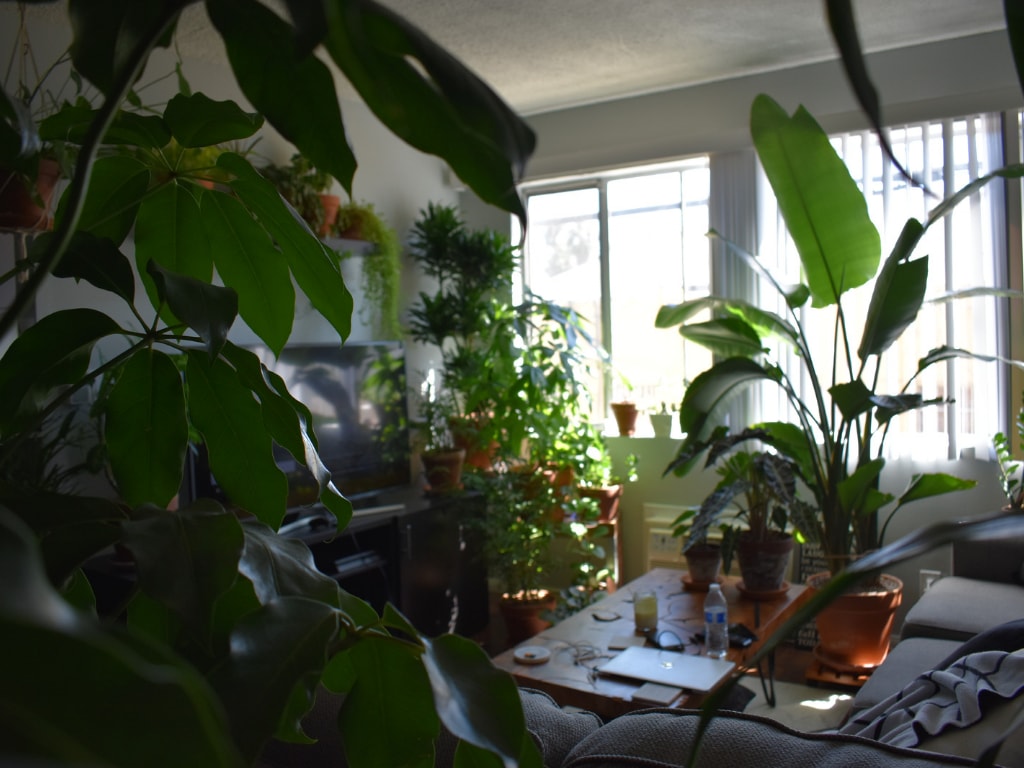
While the potential of plants to absorb VOCs has been well documented in laboratory studies, the effect of plants on indoor air in complex contexts such as offices requires additional research to determine the full capability of plants in real-life settings.6
Moreover, plants will not produce any significant amount of oxygen if the amount of light available in an indoor environment is limited.7
According to Dr. B. C. Wolverton, studies show that houseplants are most successful in removing VOCs in energy-efficient, nonventilated buildings. The quick flow of indoor and outside air in highly ventilated buildings limits the benefits of houseplants to their psychologic and aesthetic aspects.6 Check out this article for more details on how plants help with mental health.
What are the pros and cons of houseplants?
Pros
Indoor plants may have a favorable impact on occupant well-being by assisting in the creation of a more biophilic indoor environment, which may translate into increased productivity for businesses.
Houseplants can also be used for a variety of additional purposes in homes and offices. From basic decorative elements to increasing humidity and lowering dust. Obviously, if their air cleansing abilities can be improved along the road, that’s even better.
Cons
Houseplants are expected to influence indoor CO2 concentrations through photosynthesis and respiration, and plants with high VOC removal rates growing in low light circumstances may emit CO2 as an end product of degradation.7
Plant introduction may also come with certain costs or trade-offs. One potential associated downside of plants indoors may be increased humidity. Also, plants have been shown to produce certain VOCs under particular conditions.5 Spores and other bioparticle emissions may also be produced by plants, which have been observed from biowall systems.5
What is a Biowall?
Biowall systems are interior or external walls that are covered with living vegetation. They are also known as living walls, vertical gardens, green facades, and green walls. Biowalls are useful for both indoor and outdoor uses.

How can houseplants purify indoor air?
Houseplants vary in the types of chemicals they can remove from the environment and the efficiency with which they accomplish their function. Therefore, numerous species of houseplants would likely be required on a site to remove the relevant toxicants in a specific location for optimal benefit.
It was discovered that even if you had a potted plant for practically every square foot of your home, natural ventilation would still do the majority of the job in removing VOCs.
VOCs largely come from indoors in the first place, e.g. from cooking or using air fresheners. You’d need close to 10 plants per square foot before potted plants start cleaning the air at almost the same rate it’s removed via exchange with outdoor air!
Biowall systems have the potential to be valuable for future study since they mechanically draw air through a porous substrate that supports plants and their root ecosystems.
Until then, you may try opening a window to improve the air quality in your house!
What are the best houseplants to purify indoor air?
Okay, so we can’t meaningfully fix poor air quality issues with houseplants. Still, every bit helps, right? And do we need another reason to fill our homes with natural beauty?
Almost all houseplants purify indoor air. However, there are hundreds if not thousands of plants now being treated as common houseplants today, that weren’t even on NASA and Dr. B.C. Wolverton’s radar in the 1980s. Just grow what you like is my advice.
Just for inspirational reasons, below is a list of my favorite houseplants based on the following criteria:
- elimination of chemical vapors,
- ease of growth and maintenance,
- resistance to pests,
- transpiration rates.
PRECAUTION
- Some plants and plant parts can be toxic. Keep them out of the reach of children and pets.
- Some of these plants may cause allergies or trigger asthma. Check out this article for more details on asthma and allergy-friendly plants and the plants to avoid.
Chinese evergreen (Aglaonema)
These plants thrive in low to bright indirect light. Water them sparingly and allow the compost to almost dry out before watering. They prefer high humidity and light misting regularly. Chinese evergreen plants are toxic to dogs.
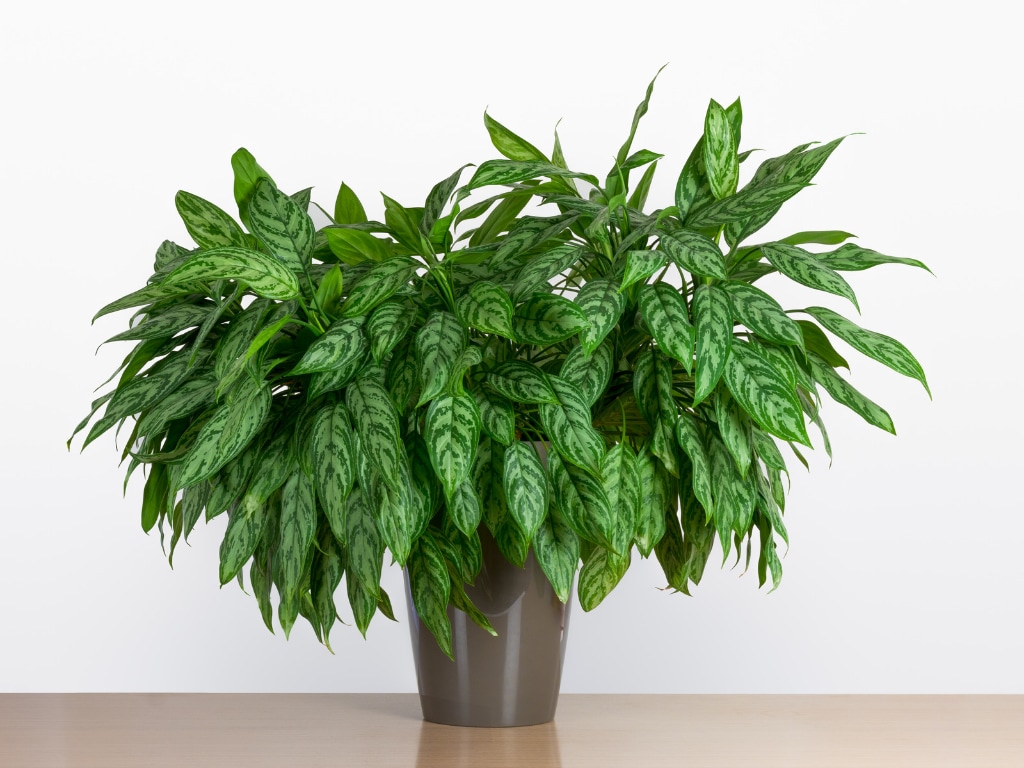
Spider plants (Chlorophytum comosum)
Spider plants, sometimes known as air plants, are tolerant to neglect and grow rapidly. They occasionally produce stunning white flowers. A mature spider plant produces baby plants called spiderettes. They can be used to propagate easily the plants.
These plants enjoy bright, indirect light. Water your spider plants about once a week and less in winter and autumn.
Spider plants are safe for children and animals.
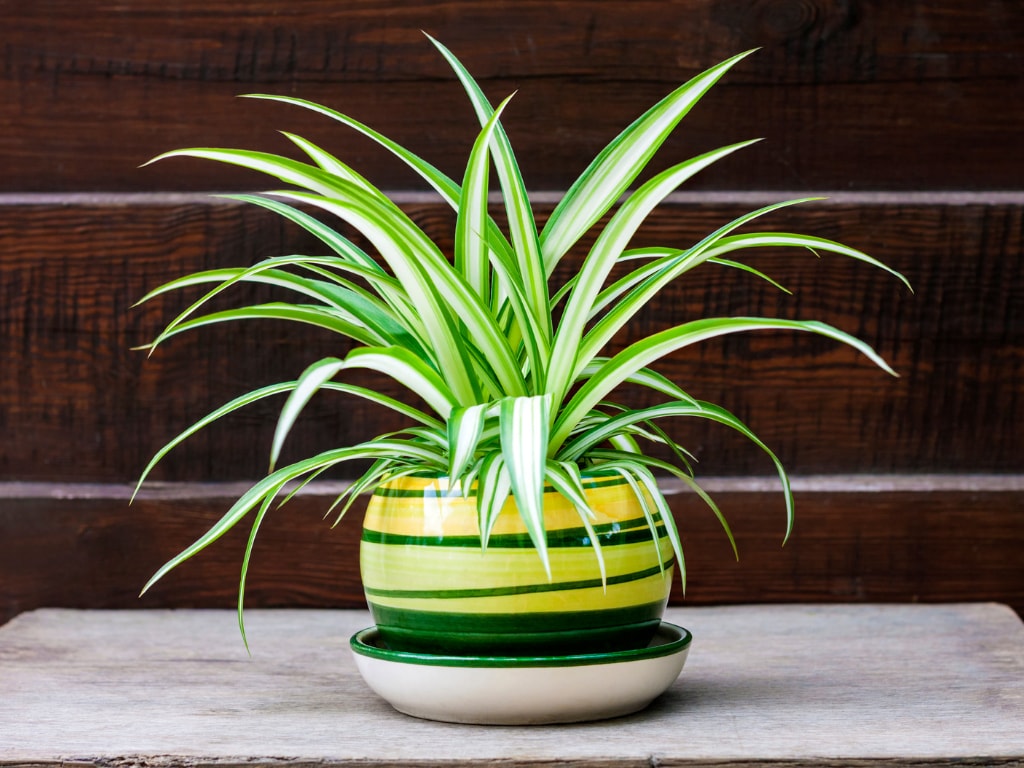
Bamboo palms (Chamaedorea seifrizii)
These robust plants are well-known for their simple elegance and height. They prefer bright but not direct sunlight and have certain care requirements.
Bamboo palms also emit a healthy amount of moisture into the air, which is especially useful during the dry winter months.
Bamboo palms love low indirect sunlight. Water to 1 to 3 times a week.
Bamboo palms are non-toxic and can be kept in a home with pets.
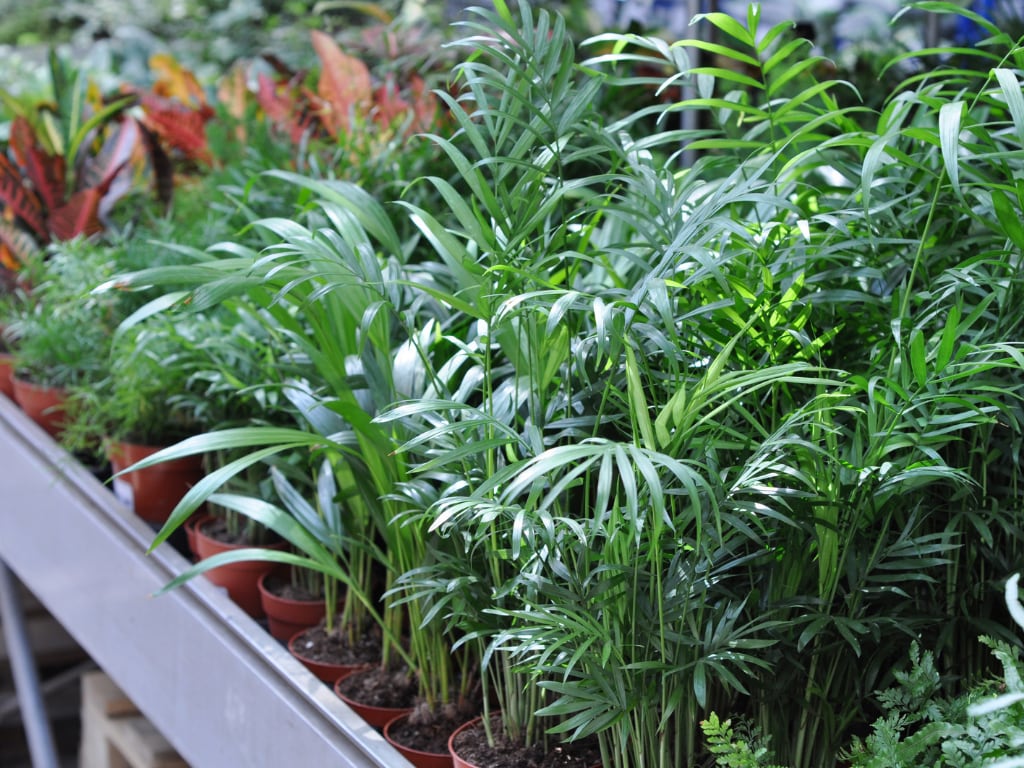
Areca palms (Chrysalidocarpus lutescens)
Areca palms are ideal for larger areas. They are quite effective in eliminating pollutants. Areca palms thrive in bright indirect light but may tolerate some shade.
During summer, give them plenty of water (a couple of times a week), but not so much in winter.
Areca palms are not toxic to either cats or dogs.
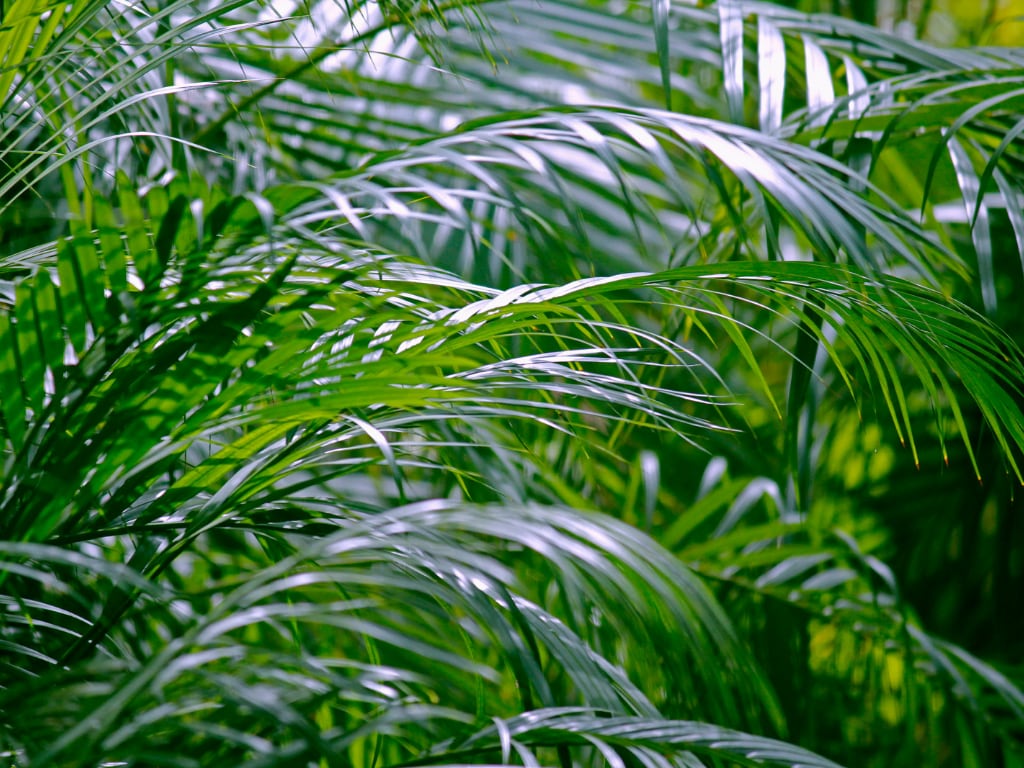
Dracaenas
There are many different types, sizes, and colors of houseplants in this enormous group.
These plants are sensitive to too much water, so keep the soil wet but not saturated.
They are toxic to pets. If your dog or cat eats dracaenas, they can vomit, salivate more, or have dilated pupils.

Golden pothos (Epipremnum aureum)
Also known as Pothos, Devil’s Vine, or Devil’s Ivy.
Place your pothos in sunlight. They may live in low light conditions, but they will not grow as vigorously and may lose some or all of their leaf variegation.
Only water when the soil feels dry. Pothos dislikes damp soil, which promotes yellowing of the leaves.
Pothos are toxic to animals.

Rubber plants (Ficus elastic)
Rubber trees are evergreen trees native to India. Their roots grow upwards and frequently become wrapped around the plant’s trunk, generating unusual shapes. These plants appreciate bright, filtered light as well as occasional maintenance.
Water each week and allow the soil to dry between waterings. To keep the leaves looking nice, trim them and wipe them down.
Rubber plants are toxic to cats and dogs.
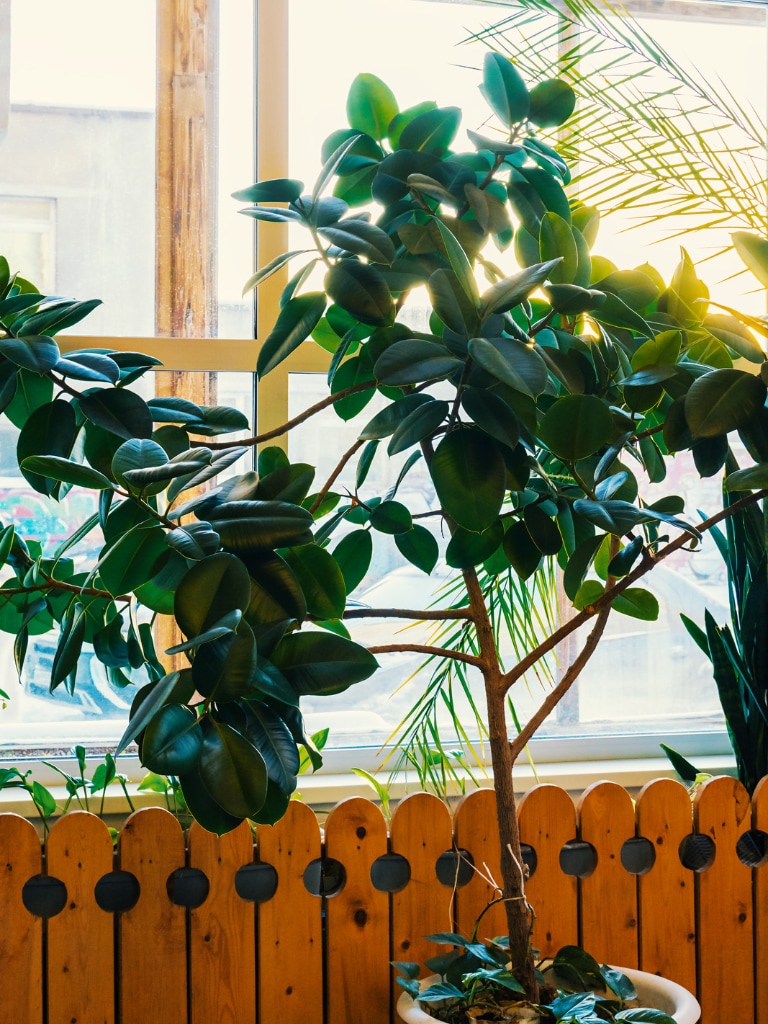
English ivy (Hedera helix)
English ivy is an evergreen climbing plant that thrives in indoor environments. Ivies enjoy bright, indirect light. They will look especially lovely in a hanging basket or on your windowsill.
Water weekly throughout growth, but avoid overwatering when temperatures drop.
English ivy is toxic to animals and humans. It has been linked to issues in canines, farm animals, and humans when consumed. In humans, the compounds in the sap can cause severe contact dermatitis, especially in people with sensitive skin.
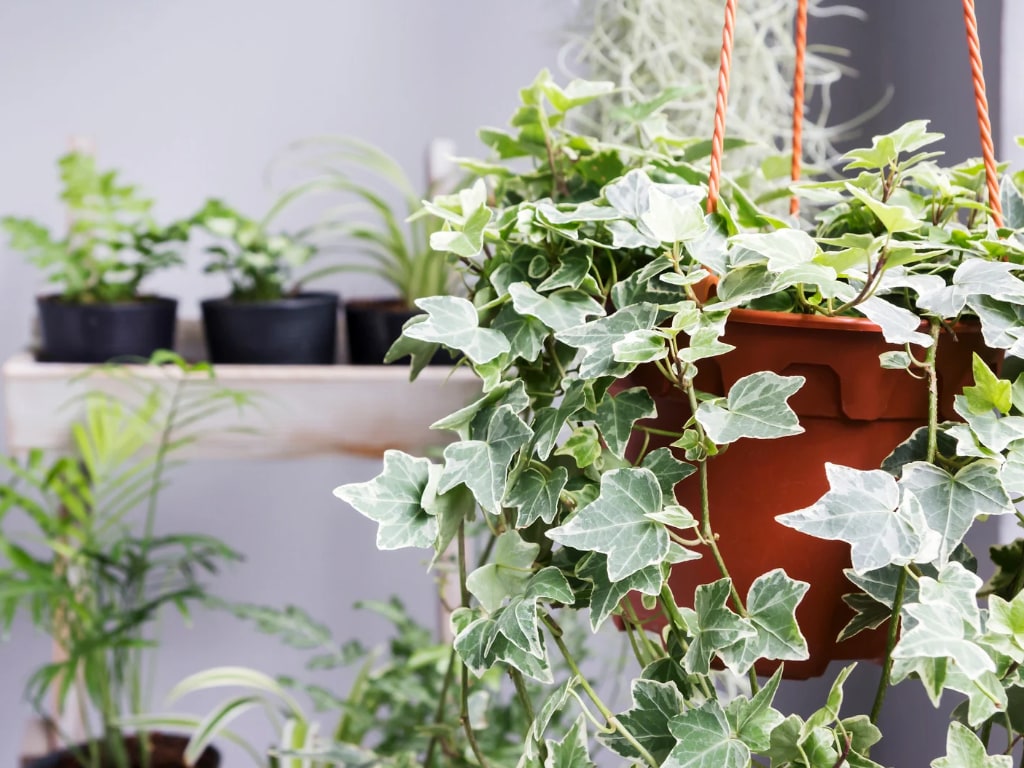
Snake plants (Sansevieria trifasciata)
Snake plants, also known as Mother-in-law’s Tongue, are succulent plants that can grow slowly tall. It is a low-maintenance plant that thrives on neglect. They prefer full sunlight but tolerate some shade. They thrive in dry environments. Water your snake plants every 10 days or so.

Snake plants are toxic to humans and animals.
Peace lilies (Spathiphyllum)
Peace lilies thrive in bright, indirect light. They grow well in most lighting circumstances, although too little light might cause blossoms to bloom. Keep the soil moist but not wet.
These plants are toxic to both animals and humans.
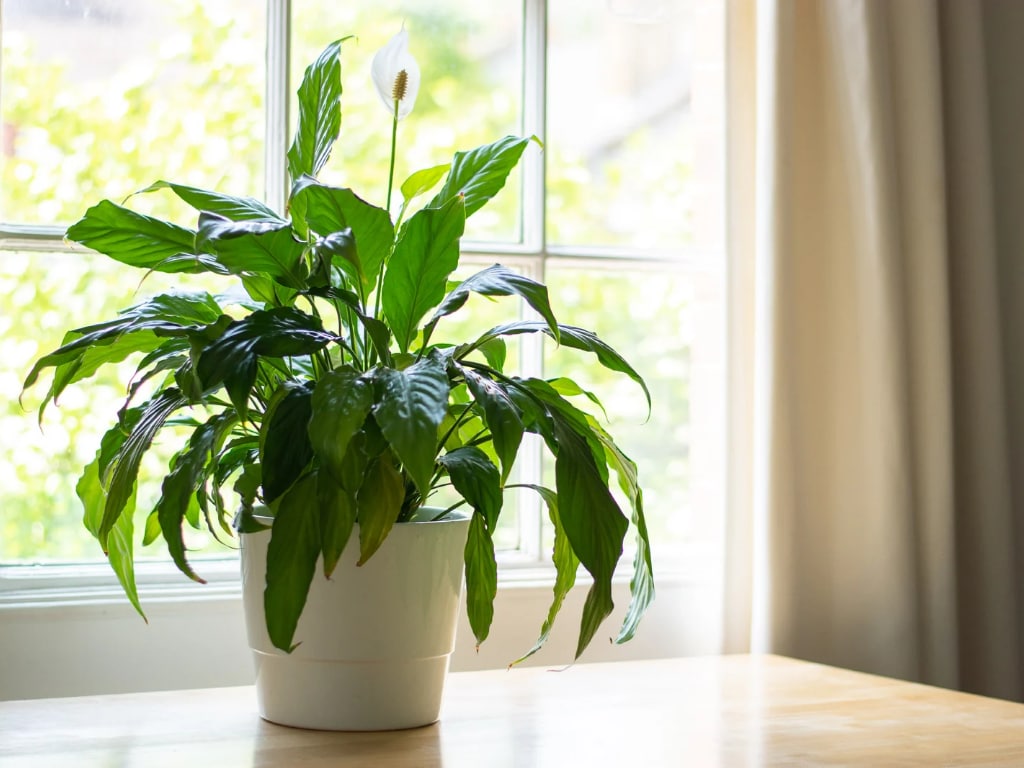
Final thoughts
Plants do indeed purify the air, but they do so far more slowly than is necessary for a noticeable improvement in air quality. For them to be effective, the pace at which they can supply clean air must be higher.
The effectiveness of houseplants in purifying the air so is occasionally overstated, and your home’s environmental conditions will have a big influence on how well they work. It would be great to have more plants in a limited area, but in general, you need a lot of plants.
You can grow whatever you want. Indoor plants will benefit you the most if you properly care for them. So keep houseplants that you like and that will fit in your home.
Light is the most important environmental factor for keeping houseplants healthy. Each plant has unique light requirements. Grow them in optimal light conditions. Every few years, repot your plants using good quality compost or potting medium. As we’ve seen in the previous sections, microorganisms in the soil, rather than plant cells, play a significant role in the removal of VOCs. The beneficial microorganisms can be reduced when the growing media degrades over time.
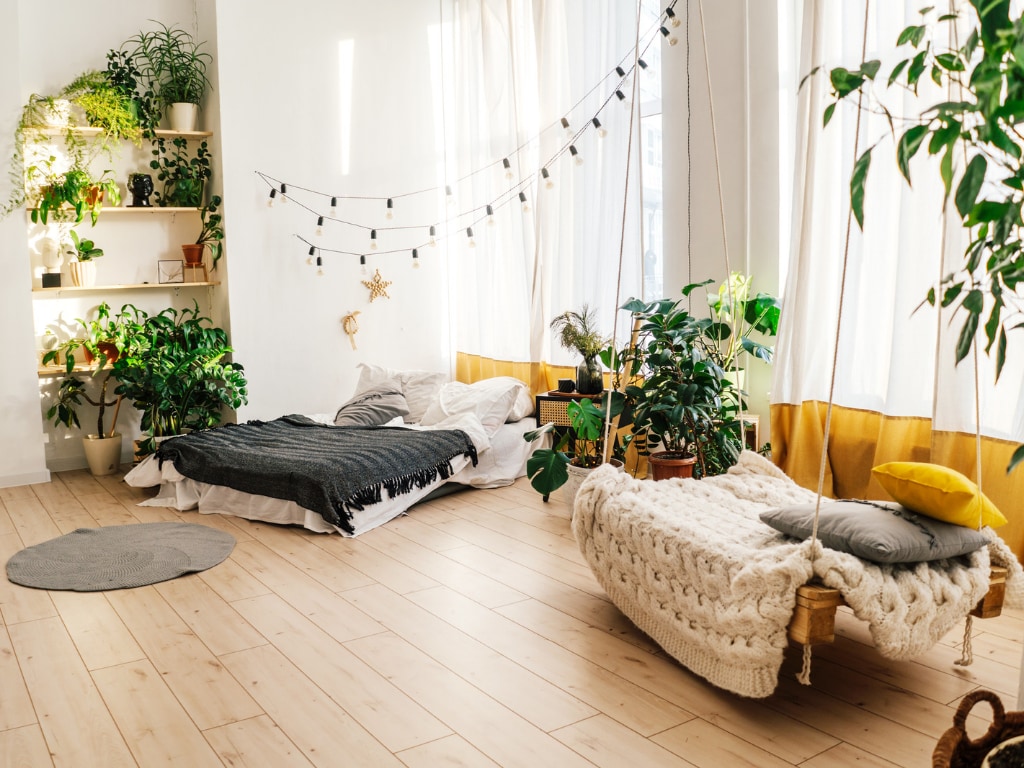
Read also:
- Allergy and Asthma-Friendly Flowering Plants
- Allergy and Asthma-Friendly Grasses and Shrubs
- Allergy and Asthma-Friendly Trees
- Are Indoor Plants Beneficial for Human Health?
Did you find this article helpful?
Share with others and help spread the knowledge!
References
1. Wolverton, B. C. A study of interior landscape plants for indoor air pollution abatement: An Interim Report. (1989).
2. Wolverton, B. C. & Wolverton, J. D. Plants and soil microorganisms: removal of formaldehyde, xylene, and ammonia from the indoor environment Journal of the Mississippi Academy of Sciences 38, 11-15 (1993).
3. Wolverton, B. C. House plants that Purify Your Home or Office: How To Grow Fresh Air. (Penguin, 1997).
4. Orwell, R. L., Wood, R. L., Tarran, J., Torpy, F. & Burchett, M. D. Removal of Benzene by the Indoor Plant/Substrate Microcosm and Implications for Air Quality. Water, Air, and Soil Pollution 157, 193-207, (2004).
5. Cummings, B. E. & Waring, M. S. Potted plants do not improve indoor air quality: a review and analysis of reported VOC removal efficiencies. Journal of exposure science & environmental epidemiology 30, 253-261, (2020).
6. Dela Cruz, M., Christensen, J. H., Thomsen, J. D. & Müller, R. Can ornamental potted plants remove volatile organic compounds from indoor air? A review. Environmental science and pollution research international 21, 13909-13928, (2014).
7. Matheson, S., Fleck, R., Irga, P. J. & Torpy, F. R. Phytoremediation for the indoor environment: a state-of-the-art review. Re/views in environmental science and bio/technology 22, 249-280, (2023).
Sign Up for Our Email List
Get our latest articles, healthy recipes, tips, and exclusive deals delivered straight to your inbox with our newsletter.
We won't send you spam. Unsubscribe at any time.

